- There are no more items in your cart
- Shipping Calculated at checkout
- Sub-Total (inc. VAT) £0.00
Need Help?
Preparation (Degreasers, T-Wash, etc.)
Proper preparation of metal surfaces is critical to ensure strong adhesion of coatings, especially when dealing with stainless steel and galvanised steel. Products like degreasers and T-Wash are indispensable for removing oils, dirt, and rust, creating an ideal base for subsequent treatments. Without thorough preparation, even the best paints and coatings can fail, leading to peeling or corrosion over time. For rusted stainless steel, specific treatments are necessary to restore and maintain the integrity of the surface before any coating application.
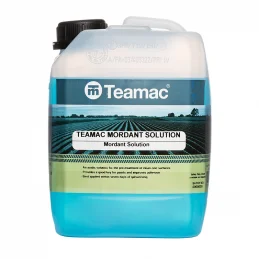
Teamac Mordant Solution (T Wash)
Etching agent, formulated to enhance paint adhesion on galvanised surfaces. For new or weathered galvanising. Also applicable on weathered surfaces with some limitations. Ideal for paints that struggle with adhesion on untreated zinc.
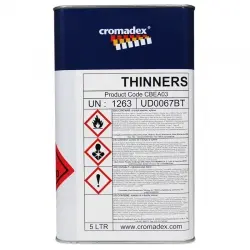
Cromadex 678 Spirit Wipe
Cromadex 678 Spirit Wipe is formulated to remove all traces of oil and grease from metal surfaces prior to painting. Recommended for manual cleaning where vapour degreasing is not suitable, product is supplied ready for use. More Information Delivery Info
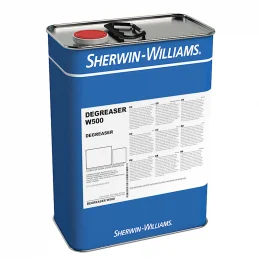
Sherwin-Williams Degreaser W500
Sherwin-Williams Degreaser W500, formerly known as Envirogard W500 and the recommended alternative to RSL Fats, Oils and Grease Remover, is a water based degreasing agent based on a blend of plant derived surfactants free from caustic alkalis, silicates, harmful solvents, phosphates or aggressive biocides. Degreaser W500 is suitable for...
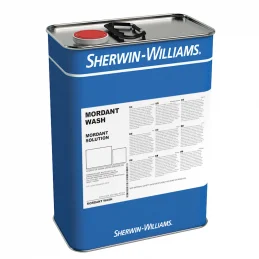
Sherwin-Williams Mordant Wash L703
Sherwin-Williams Mordant Wash L703 (formerly known as Leighs L703/Transgard TG155) is a blue mordant solution for application onto galvanized surfaces as a chemical pre-treatment to improve the adhesion of subsequent paint systems.
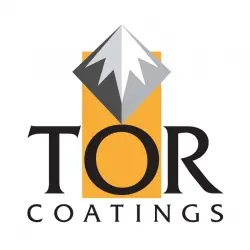
Tor T-Wash Mordant Solution
Tor T-Wash Mordant Solution, a pre-treatment wash for galvanised steel that ensures adhesion for a wider range of subsequent coatings. The product changes colour (from grey to black) for a visual aid and proof that the entire surface has been treated satisfactorily.Good coverage - up to 20 square metres per litre Pre-treatment only -...
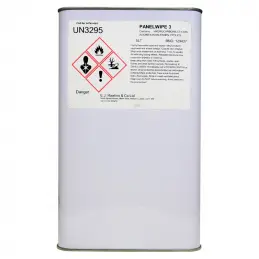
Panel Wipe
Panel Wipe, part of our cleaners and thinners range for use with appropriate paints, coatings and equipment advised by our technical team. Professional use only.More Information Delivery Info
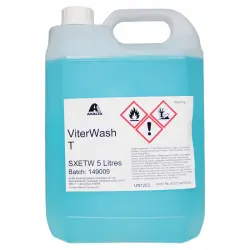
Axalta ViterWash T Etch Solution
Axalta ViterWash T Etch Solution is a single pack phosphoric acid etch solution, designed for the surface treatment of fresh galvanising prior to painting.To etch bright, unweathered galvanised surfaces, as an adhesion promoter for subsequently applied paint coatings Turns the surface a grey-black colour on reaction to show effective...
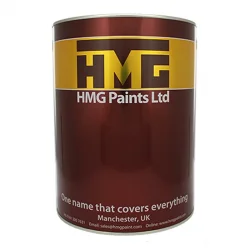
HMG Mordant T Wash
HMG Mordant T Wash is designed for use as an etching solution for galvanised steel & zintec.Manufactured to a formulation originally developed by the British Rail Board
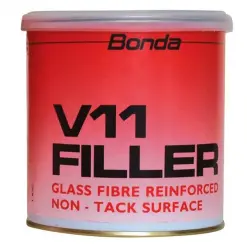
Bonda V11 Glassfibre
Bonda V11 Glassfibre is a rapid hardening resilient filler with high glass fibre content providing great strength to repairs. For repairing rust holes and gaps in metal and is an excellent reinforced filler for fibreglass repairs.High glass fibre content Provides great strength to repairs For repairing rust holes and gaps in metal...
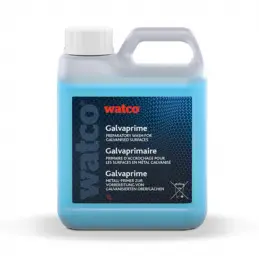
Watco Galvaprime
Primes and prepares galvanised surfaces for painting.Overcoat the same day Essential for good adhesion Quick and easy to use Apply by brushCoverage Calculator More Information Delivery Info
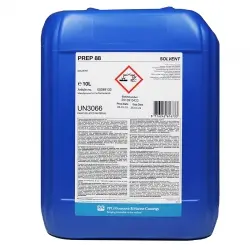
PPG Prep 88
PPG Prep 88 (also known as Duraprep) is a waterborne alkaline cleaner that is ideal for cleaning soiled and chalked surfaces. Free from solvents, phosphates, halogens and petroleum distillates.Biodegrable Dramatically improves aged overcoatability Freezing point: 25°F (-4°C) Boiling Point: 212°F (100°C)
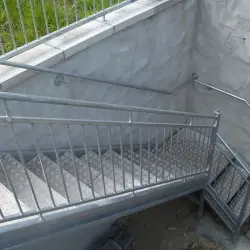
International Interprime 160
International Interprime 160 is a phosphoric acid based mordant solution for treating galvanised steel. International Interprime 160 is for the chemical pretreatment of galvanised steel prior to the application of protective coating systems, in order to ensure good adhesion where blasting or abrasion is not possible.
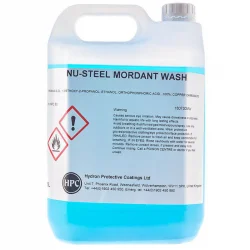
Hydron Nu-Steel SP Mordant Wash
Nu-Steel SP Mordant Wash is an acidic solution of a copper salt for the pretreatment of clean zinc surfaces.Provides a good key for paints which would otherwise show poor adhesion For Zinc and Galvanised steelMore Information Delivery Info
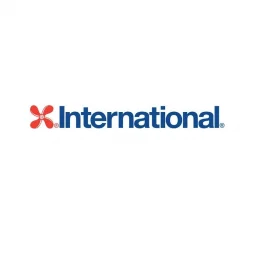
International Interplus 4101 Clean Gel
Interplus 4101 Clean Gel, a water-based rust remover / cleaner gel designed to remove light to medium rust deposits from a variety of surfaces. A quick, cost-effective and eco-friendly alternative to sandblasting, acid washing or high-pressure water blasting, Interplus 4101 Clean Gel has a thick consistency and sticks to surfaces, making it...

International Interplus 4103 Clean Cons
Interplus 4103 Clean Cons, a water-based rust remover / cleaner gel designed to remove light to medium rust deposits from a variety of surfaces. A quick, cost-effective and eco-friendly alternative to sandblasting, acid washing or high-pressure water blasting, Interplus 4103 Clean Cons is a concentrated fluid, excellent for cleaning closed...
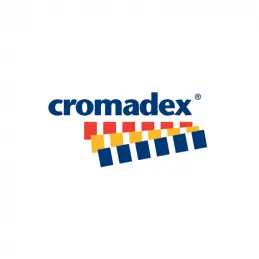
Cromadex Anti-Static Cleaner
Cromadex Anti-Static Cleaner is a solvent used to remove electrostatic build-up and clean surfaces prior to overcoating. 5L Pack Applied using a lint free clothMore Information Delivery Info
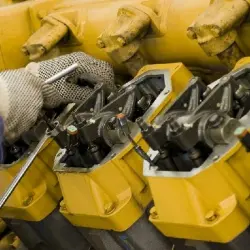
International Interplus 546
International Interplus 546 is a single component solvent based cleaner/degreaser, which is specifically designed to remove surface contamination such as oil, grease, dirt and soot from metallic and coated substrates as part of a maintenance program.
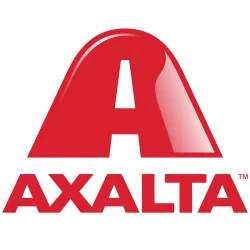
Axalta ViterClene C Degreasing Solution
A single pack bio-degradable detergent wash, for the efficient removal of dirt, oil or grease prior to painting. Specially formulated for use with ViterClad cladding coatings.Specifically recommended for cleaning Plastisol or other sheeting prior to coating with ViterClad systems Effective for cleaning aged coatings or bare substrates of...
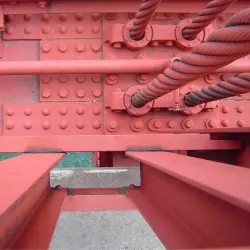
International Interplus 634
International Interplus 634 is specifically designed to remove tightly adhering coating residues from metallic substrates prior to repainting with approved maintenance coatings. Coating residues include conventional epoxies, polyurethanes, alkyds, acrylics and water borne coatings. Please Note: This product is subject to an extended lead time...

Owatrol Owaphos Rust Remover & Passivater
For ferrous and non-ferrous metals, steel, cast iron, galvanized and zinc coated surfaces. No need for sanding. Quickly and effectively chemically prepares new metal surfaces for painting. Creates a fine coat of oxide on the surface that coatings can firmly adhere to. Used diluted, removes rust from ferrous metals and the oxidation from...

Owatrol Oil Paint Conditioner & Rust Inhibitor
For use on ferrous and non-ferrous metals including steel structures, railings, pipes, grills. Machinery, trailers, tanks. Fills dry porous wood to stop paint peeling. Provides a tough, flexible finish, driving out excess moisture and air; displacing it from rusted metal, so stopping rust. Added to any oil or alkyd based coatings and it...
Need Help?
Need Help?
The Importance of Metal Surface Preparation
Proper preparation of metal surfaces before applying any paint, coating, or sealant is a critical step that ensures the long-term success of the application. The adhesion, durability, and overall finish of the coating are highly dependent on how well the surface has been prepared. This is particularly important when working with metals like stainless steel and galvanised steel, which present unique challenges due to their inherent properties.
Understanding the Role of Degreasers and T-Wash
Degreasers are essential tools in the process of metal surface preparation. These products are specifically formulated to remove oils, greases, and other contaminants that can interfere with the bonding of coatings to metal surfaces. Even in situations where the metal surface appears clean to the naked eye, microscopic residues can still be present, and these residues can significantly affect the adhesion of coatings. In industrial environments, where machinery and metal components are frequently exposed to oils and lubricants, degreasers are an indispensable first step in any surface preparation process.
Mechanical blasting, also known as "shot blasting" or "sweep blasting," is often the preferred method of preparing steel surfaces for coating. This process involves using abrasive materials propelled at high speed to remove surface contaminants, rust, and old coatings, creating a rough profile that enhances the adhesion of new coatings. Shot blasting is particularly effective on large steel structures, providing a uniform surface that is ideal for paint or coating application. However, this method is not always feasible, especially in situations where the surface is delicate, access is limited, or environmental conditions make blasting impractical. In such cases, T-Wash and other mordant washes become essential for preparing galvanised steel surfaces. These chemical treatments are ideal for situations where blasting is not an option, and weathering the galvanised steel to create an adequate surface for painting would take too long. T-Wash and mordant washes effectively etch the surface, making it more receptive to coatings and ensuring a durable, long-lasting finish.
T-Wash, also known as Mordant Solution, is a chemical treatment designed specifically for use on galvanised steel. It contains phosphoric acid and a wetting agent, which together etch the surface of the galvanised steel, making it more receptive to subsequent coatings. This etching process not only cleans the metal but also creates a lightly corroded surface that enhances the mechanical bond between the steel and the paint. Without the application of T-Wash, coatings on galvanised steel are at a higher risk of peeling and flaking, especially when exposed to harsh environmental conditions.
The Critical Importance of Metal Surface Preparation for Stainless Steel and Galvanised Steel
Stainless steel and galvanised steel are widely used in various industries due to their resistance to corrosion. However, these same properties that make them so valuable also pose challenges when it comes to coating them. The thin oxide layer that forms on stainless steel as it is exposed to the environment serves as a protective barrier against corrosion but also acts as a barrier to paint and coatings. If this oxide layer is not properly treated and removed, coatings applied to stainless steel may fail to adhere properly, leading to peeling and exposure of the metal to corrosive elements.
Similarly, galvanised steel is coated with a layer of zinc to protect it from rusting. This zinc layer, while effective at preventing corrosion, can react negatively with certain coatings, leading to adhesion failure. The use of T-Wash is particularly important in this context, as it helps remove the oxide layer and etches the surface, making it more conducive to coating adhesion. This step is crucial to ensure the longevity and effectiveness of coatings applied to galvanised steel.
Situational Examples of Metal Preparation
1. Industrial Machinery
In industrial settings, machinery is often subjected to harsh conditions, including exposure to oils, lubricants, and other contaminants. To ensure that protective coatings adhere properly, it is essential to thoroughly clean the metal surfaces with a degreaser. For example, when preparing a stainless steel machine component for coating, the first step is to apply a degreaser to remove any oil and grease. After the degreaser has been applied and the surface cleaned, a specialised metal cleaner is used to remove any remaining contaminants, ensuring a pristine surface. Finally, a primer specifically formulated for stainless steel is applied, followed by the desired topcoat. This process ensures that the coating adheres properly and provides long-term protection against wear and corrosion.
2. Construction and Infrastructure
Galvanised steel is a common material in construction, particularly for structures such as bridges, supports, and beams, due to its corrosion-resistant properties. However, before applying any paint or protective coating, it is vital to treat the galvanised steel with T-Wash. For example, when preparing a bridge support for painting, the first step is to apply T-Wash to the surface. This treatment etches the zinc coating on the galvanised steel, creating a rough surface that allows the paint to adhere more effectively. After the T-Wash has been applied and the surface rinsed and dried, a primer suitable for galvanised steel is applied. This is followed by a topcoat that provides long-term protection against the elements, ensuring the structural integrity and aesthetic appeal of the bridge.
3. Automotive Repair and Maintenance
In the automotive industry, stainless steel is often used for components such as exhaust systems due to its high resistance to heat and corrosion. However, before applying a heat-resistant coating, the stainless steel surface must be properly prepared. This process begins with the removal of any rust, which can be achieved using a rust remover specifically designed for stainless steel. Next, a degreaser is applied to remove any oils, grease, or other contaminants from the surface. After the surface has been thoroughly cleaned and dried, it is lightly sanded to create a rough texture that enhances the adhesion of the heat-resistant coating. This preparation process ensures that the coating bonds properly to the stainless steel, providing long-lasting protection against high temperatures and corrosive elements.
4. Marine Applications
Marine environments are notoriously harsh on metal surfaces due to the constant exposure to saltwater, which accelerates corrosion. Stainless steel and galvanised steel are commonly used in marine applications for their corrosion-resistant properties, but proper surface preparation is essential to maintain these properties. For example, when preparing the stainless steel hull of a boat for coating, the first step is to apply a degreaser to remove any oils and salt deposits. After the surface has been cleaned, a rust inhibitor is applied to prevent future rust formation. The next step is to apply a marine-grade primer that is specifically designed for stainless steel or galvanised steel, followed by a topcoat that provides long-term protection against saltwater corrosion. This preparation process ensures that the metal surfaces remain protected and that the coating provides the intended level of durability and corrosion resistance.
5. Architectural Metalwork
Architectural metalwork, such as railings, gates, and sculptures, often involves the use of stainless steel or galvanised steel. To ensure that these metal pieces retain their aesthetic appeal and structural integrity, proper surface preparation is essential before applying any coatings. For example, when preparing a stainless steel railing for coating, the surface is first cleaned with a degreaser to remove any oils and fingerprints. If the railing is located outdoors, it may also be necessary to remove any rust with a rust remover. After the surface has been cleaned and rust removed, a protective coating is applied to maintain the natural appearance of the stainless steel while providing protection against the elements. This thorough preparation process ensures that the railing remains both functional and visually appealing for years to come.
Treating Rusted Stainless Steel
Stainless steel is well-known for its resistance to rust, but it is not completely immune. Rust can form on stainless steel when it is exposed to harsh environmental conditions, such as saltwater, or when it is improperly maintained. Treating rusted stainless steel requires a careful and methodical approach to remove the rust without damaging the underlying metal.
1. Assess the Extent of the Rust
Before beginning the rust removal process, it is important to assess the extent of the rust. Light surface rust can often be removed with a simple scrubbing pad and a mild abrasive cleaner. However, if the rust has penetrated deeper into the metal, a stronger rust remover or more aggressive method, such as sandblasting, may be necessary.
2. Remove the Rust
For light rust, start by applying a mild abrasive cleaner to the rusted area. Use a non-metallic scrubbing pad to gently remove the rust. It is important to avoid using steel wool or other metallic abrasives, as these can scratch the stainless steel and introduce contaminants that may lead to further rusting. If the rust is more severe, a commercial rust remover designed specifically for stainless steel may be required. These products typically contain acids or other chemicals that break down the rust, making it easier to remove. Follow the manufacturer’s instructions carefully when using a rust remover, and take care to avoid contact with surrounding surfaces.
3. Clean the Surface
After the rust has been removed, it is essential to clean the surface thoroughly to remove any residue from the rust remover. This can be done using a stainless steel cleaner or a mild detergent. Rinse the surface with clean water and dry it completely with a soft cloth to prevent water spots or further rust formation. At this stage, it is important to ensure that no traces of rust or rust remover remain on the surface, as these can affect the adhesion of subsequent coatings.
4. Apply a Protective Coating
To further protect the stainless steel and prevent future rusting, it is advisable to apply a protective coating designed for stainless steel. The protective coating will help to seal the surface and provide an additional layer of protection against moisture, chemicals, and other contaminants. For outdoor or marine applications, a UV-resistant coating may also be necessary to protect the metal from the damaging effects of sunlight.
Common Mistakes in Metal Surface Preparation
1. Skipping the Cleaning Step
One of the most common mistakes in metal surface preparation is skipping the cleaning step. Even if a metal surface appears clean, it may still have oils, dirt, or other contaminants that can interfere with coating adhesion. These contaminants can prevent the coating from bonding properly to the metal, leading to peeling, flaking, or premature failure. To avoid this, always clean the surface thoroughly with a degreaser before proceeding to other preparation steps.
2. Not Using the Correct Products
Different metals require different preparation methods and products. Using the wrong product can lead to poor adhesion, peeling, or even damage to the metal. For example, using a standard metal primer on galvanised steel can result in the coating failing to adhere properly because the primer is not designed to bond with the zinc coating. Similarly, using an abrasive cleaner on stainless steel can scratch the surface and introduce contaminants that lead to rust. Always use products that are specifically designed for the type of metal you are working with.
3. Inadequate Drying Time
After cleaning and treating the metal surface, it is important to allow adequate drying time before applying any coatings. Applying a coating to a wet or damp surface can trap moisture under the coating, leading to blistering, peeling, or rust formation. This is especially true for metal surfaces that are exposed to outdoor environments, where moisture can quickly penetrate the coating if it is not properly applied. To prevent this, always follow the manufacturer’s recommendations for drying times, and ensure that the surface is completely dry before applying the coating.
4. Neglecting Rust Removal
Rust is a common issue with metal surfaces, particularly in outdoor or industrial environments. Neglecting to remove rust before applying a coating can lead to coating failure and further corrosion. Even small areas of rust can spread quickly under a coating, leading to blistering, peeling, and eventual failure of the entire coating system. Always remove rust completely before proceeding with surface preparation and coating application. This may involve mechanical methods such as sanding or grinding, as well as chemical treatments with rust removers.
5. Improper Handling of Stainless Steel
Stainless steel requires special care during surface preparation to avoid contamination and damage. Using abrasive tools or cleaners not designed for stainless steel can scratch the surface or introduce contaminants that can lead to rust. For example, using steel wool on stainless steel can leave behind tiny particles of carbon steel, which can rust and cause staining on the stainless steel surface. Always use non-abrasive tools and cleaners specifically designed for stainless steel to avoid these issues. Additionally, it is important to handle stainless steel with clean gloves to avoid transferring oils and other contaminants from your hands to the metal surface.
Additional Considerations for Specific Metals
Galvanised Steel
When working with galvanised steel, it is essential to remember that the zinc coating can react with certain types of coatings, leading to poor adhesion or even corrosion. To prevent this, always use a primer specifically designed for galvanised steel. These primers are formulated to bond with the zinc coating and provide a suitable base for the topcoat. Additionally, the surface should be treated with T-Wash or a similar etching product to ensure proper adhesion. Skipping this step can result in the coating peeling or flaking off over time, particularly in harsh environments.
Aluminium
Aluminium is another metal that requires special preparation before coating. Like stainless steel, aluminium forms a natural oxide layer that can interfere with coating adhesion. Before applying any coatings, the aluminium surface should be cleaned with a degreaser to remove oils and contaminants. This is followed by the application of an etching primer designed for aluminium, which helps to create a surface that allows the coating to adhere properly. In some cases, it may also be necessary to lightly sand the aluminium surface to create a rougher texture for better adhesion.
Cast Iron
Cast iron surfaces are often rough and porous, making them more susceptible to rust and corrosion if not properly prepared. Before applying any coatings, the cast iron surface should be thoroughly cleaned with a degreaser to remove oils and contaminants. After cleaning, a rust inhibitor can be applied to prevent rust formation. This is particularly important for cast iron surfaces that will be exposed to moisture, such as outdoor furniture or machinery. For applications involving high temperatures, such as stoves or grills, a high-temperature primer and coating may be necessary to ensure long-lasting protection.
Complementary Accessories or Products
To achieve the best results in metal surface preparation, it is often necessary to use complementary products and accessories that enhance the effectiveness of the preparation process. Here are some essential items to consider:
1. Sanding Pads and Abrasives
Sanding pads and abrasives are essential for creating a rough surface on metals like stainless steel and aluminium, which improves coating adhesion. For stainless steel, non-metallic sanding pads are recommended to avoid contamination. For more aggressive preparation, such as removing heavy rust or old coatings, abrasive discs or sandblasting equipment may be necessary.
2. Rust Inhibitors
Rust inhibitors are chemical treatments that can be applied to metal surfaces to prevent rust from forming. These products are particularly useful for metals that will be exposed to moisture or harsh environments, such as outdoor structures or machinery. Rust inhibitors can be applied after cleaning the metal surface and before applying the primer or topcoat.
3. Metal Primers
Metal primers are essential for ensuring strong adhesion between the metal surface and the final coating. Primers are available for different types of metal, including stainless steel, galvanised steel, and aluminium. Choosing the right primer is crucial for the success of the coating system, as it provides a stable base that enhances the durability and performance of the topcoat.
4. Protective Coatings
After the metal surface has been prepared and coated, a protective coating can be applied to provide additional protection against moisture, chemicals, and other contaminants. These coatings are available in clear or coloured finishes, depending on the desired appearance. For outdoor applications, UV-resistant coatings are recommended to protect the metal from the damaging effects of sunlight.
FAQs
1. Why is surface preparation important before coating metal?
Surface preparation is crucial because it ensures that the coating adheres properly to the metal surface. Without proper preparation, the coating may peel, flake, or fail prematurely, leading to rust and corrosion. Thorough cleaning, etching, and priming are essential steps that create a surface conducive to strong adhesion and long-lasting protection.
2. What is the difference between a degreaser and a cleaner?
A degreaser is specifically formulated to remove oils, greases, and other contaminants from metal surfaces. These substances can significantly interfere with coating adhesion if not removed. A cleaner, on the other hand, is a more general-purpose product that removes dirt, dust, and other surface contaminants. While both are important, degreasers are particularly critical in industrial and automotive settings where oils and greases are commonly present.
3. Can I skip the T-Wash step when coating galvanised steel?
No, skipping the T-Wash step can lead to poor adhesion of the coating. T-Wash etches the surface of galvanised steel, making it more receptive to coatings. Without this step, the coating may peel or flake off over time, especially in harsh environmental conditions. T-Wash is particularly important for ensuring the long-term durability of coatings applied to galvanised steel.
4. How do I treat rust on stainless steel?
To treat rust on stainless steel, start by assessing the extent of the rust. Light rust can be removed with a mild abrasive cleaner and a non-metallic scrubbing pad. For more severe rust, a commercial rust remover designed specifically for stainless steel should be used. After removing the rust, clean the surface thoroughly and apply a protective coating to prevent future rust formation.
5. What products should I use to prepare aluminium for coating?
To prepare aluminium for coating, begin by using a degreaser to remove any oils, grease, or other contaminants from the surface. Next, apply an etching primer designed specifically for aluminium. This primer creates a surface that allows the coating to adhere properly. In some cases, it may also be beneficial to lightly sand the aluminium surface to create a rough texture that enhances adhesion.
6. Can I use the same primer for all types of metal?
No, different types of metal require different primers. For example, galvanised steel requires a primer that is specifically designed to bond with the zinc coating, while stainless steel may require a different type of primer. Using the wrong primer can result in poor adhesion, peeling, or even damage to the metal surface.
7. How do I know if the metal surface is ready for coating?
The metal surface is ready for coating when it is clean, dry, and free of any contaminants such as oil, grease, rust, or dust. Additionally, the surface should have the appropriate level of roughness or etching to ensure proper adhesion of the coating. Following these steps ensures that the coating will bond effectively to the metal and provide long-lasting protection.
8. Can I apply a coating to a damp metal surface?
No, applying a coating to a damp metal surface can trap moisture under the coating, leading to blistering, peeling, or rust formation. Always ensure that the surface is completely dry before applying any coatings, or use a moisture-tolerant primer for metal. This is particularly important in outdoor environments where moisture can easily penetrate improperly applied coatings.
